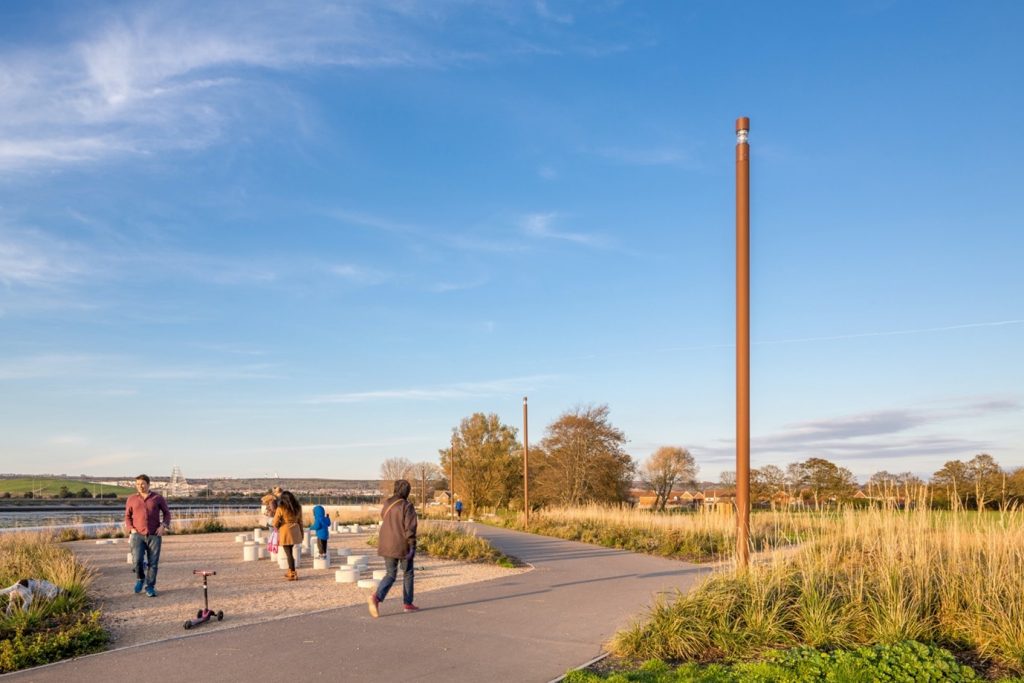In recent years Portsmouth has been overhauling the sea defences that protect England’s only island city from coastal erosion and flooding.
The North Portsea Island Scheme, costing £58m spans 8.4km from the Mountbatten Centre at Tipner Lake round the north of the island through to Milton Common.
Once all phases of the development have been completed, pedestrians and cyclists will be able to explore the varied habitats along the northern edge of Portsea Island. These include saltmarshes, mudflats, grassland and the only woodland on Portsea Island.
In 2019 the Tipner Lake phase was completed, stretching 1.85 km of coastline from the Mountbatten Centre to the Portsbridge roundabout.
The height of the previous seawall was raised by 1.4m, creating a safer environment for this key car free route out of the city.
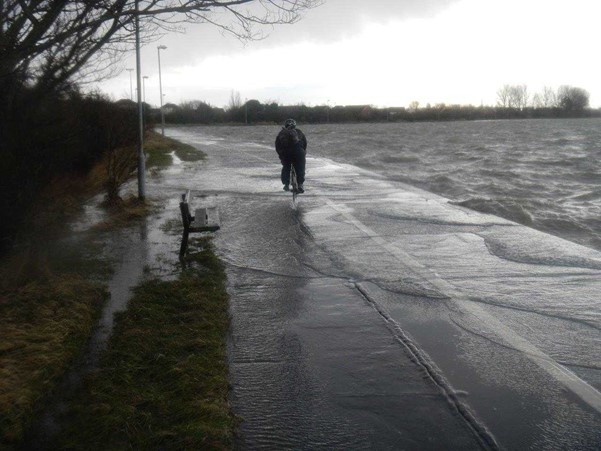
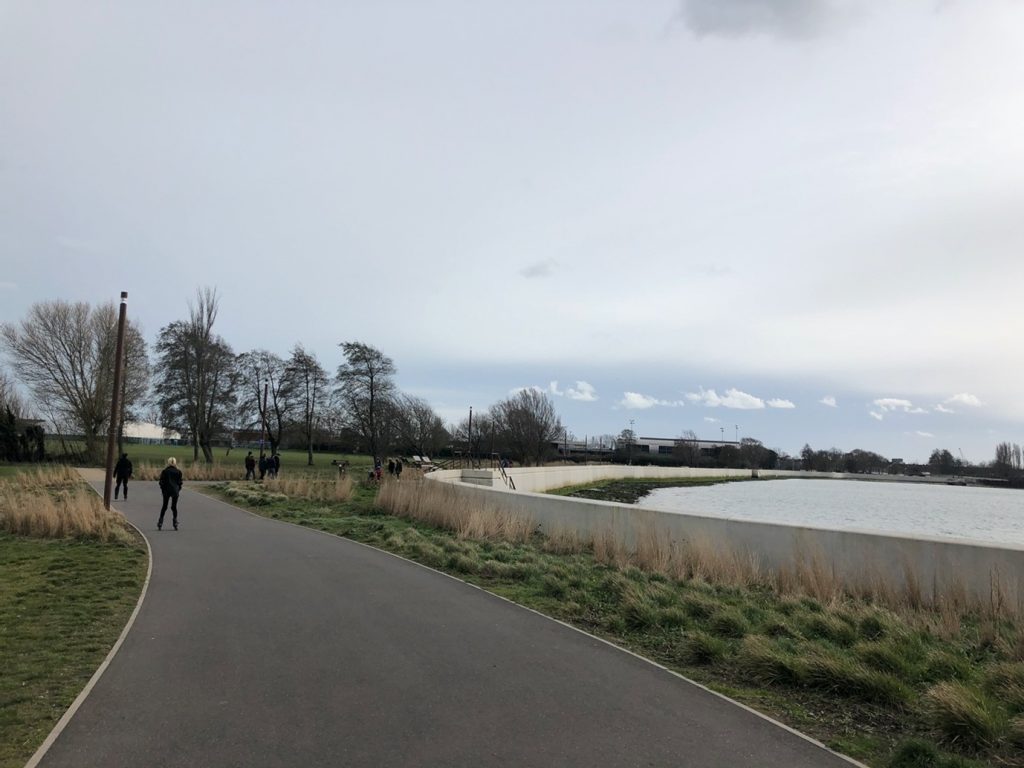
The area’s environmental designations include SPA, RAMSAR, Important Bird Area, SSSI, Designated Shellfish Waters and Bass Nursery Area.
The realignment of the sea wall has helped to enhance this unique environment by creating an additional 600m2 of important mudflat habitat. This provides a low tide feeding zone for wading birds, and overwintering birds such as the cormorant.
Additionally, 3 tidal pools have been created to encourage marine biodiversity, and 150m2 of divided sedge was reinstated. Saltmarsh plants, which were relocated from a habitat that would have been impacted by the next phase of works, were planted in the scheme. This is a testament to Portsmouth’s attention and commitment to creating environments, which not only look good but have sustainability at the core of their design.
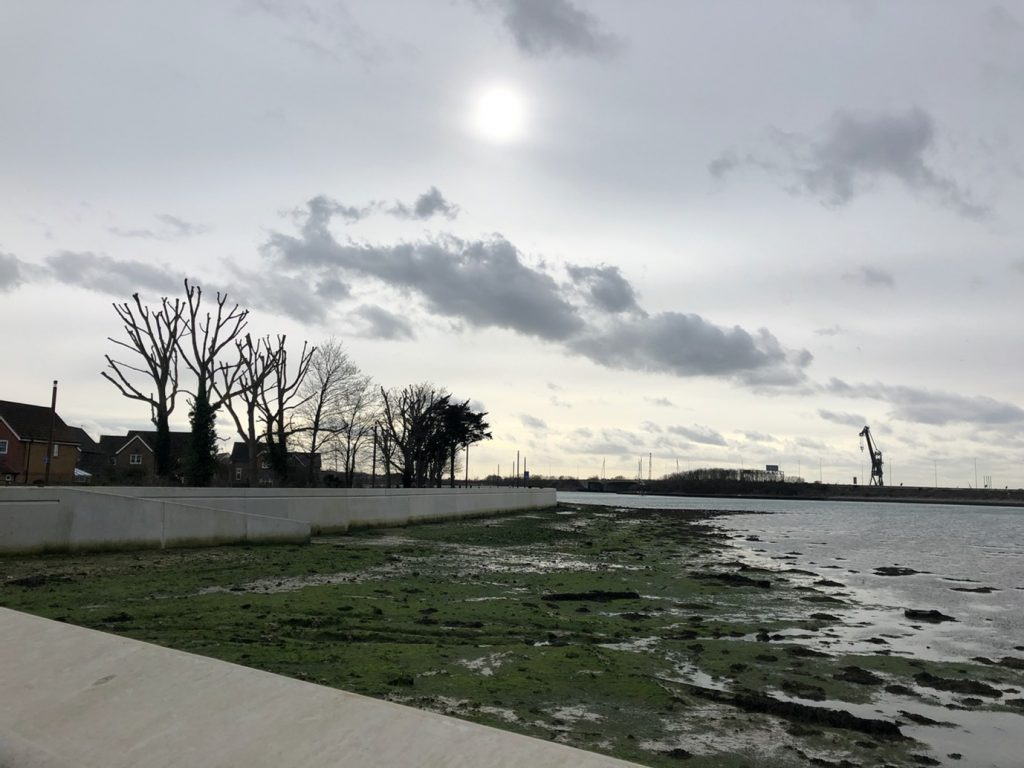
The sea defences have protected hundreds of homes from coastal flooding and have provided a much needed habitat for its resident and migratory bird populations. The thoughtful public realm design has also opened up these unique environments to a range of users, stitching these pockets of nature in the city. Accessibility has been considered throughout. There are wheelchair friendly picnic tables, clear signage at every intersection of main routes, and a variety of footpaths in accessible surfacing materials.
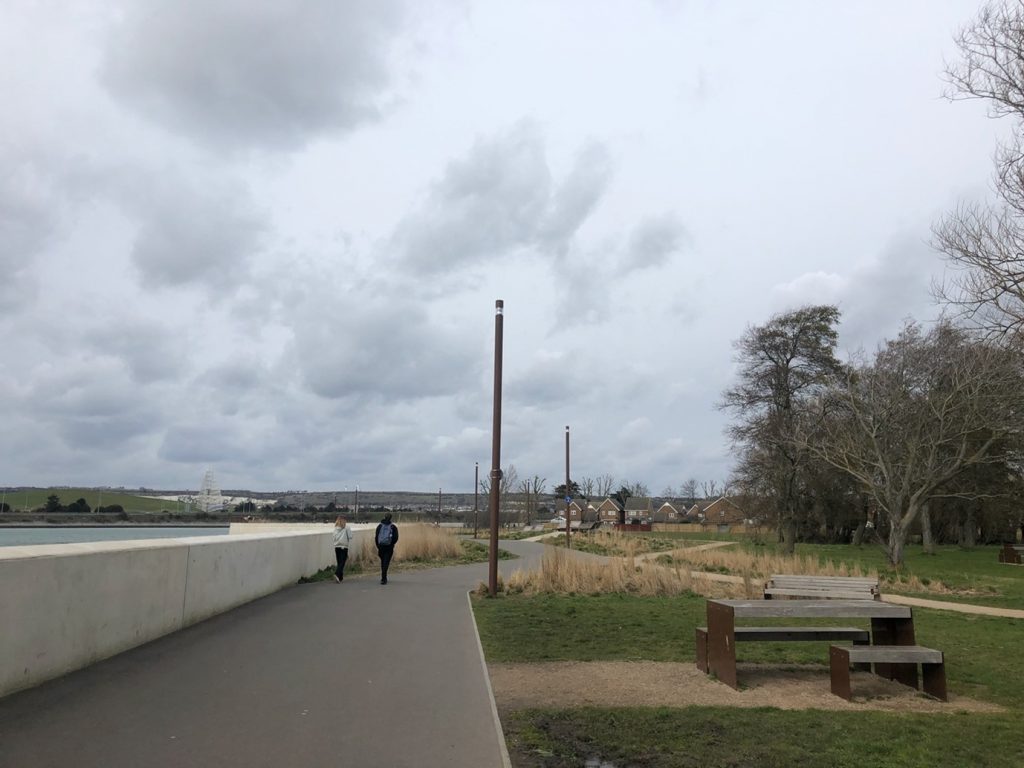
The change of materials from bitmac to ‘boardwalk’ paviours splits up the main footpath from the seating and activity zones, creating a sense of arrival in each space.
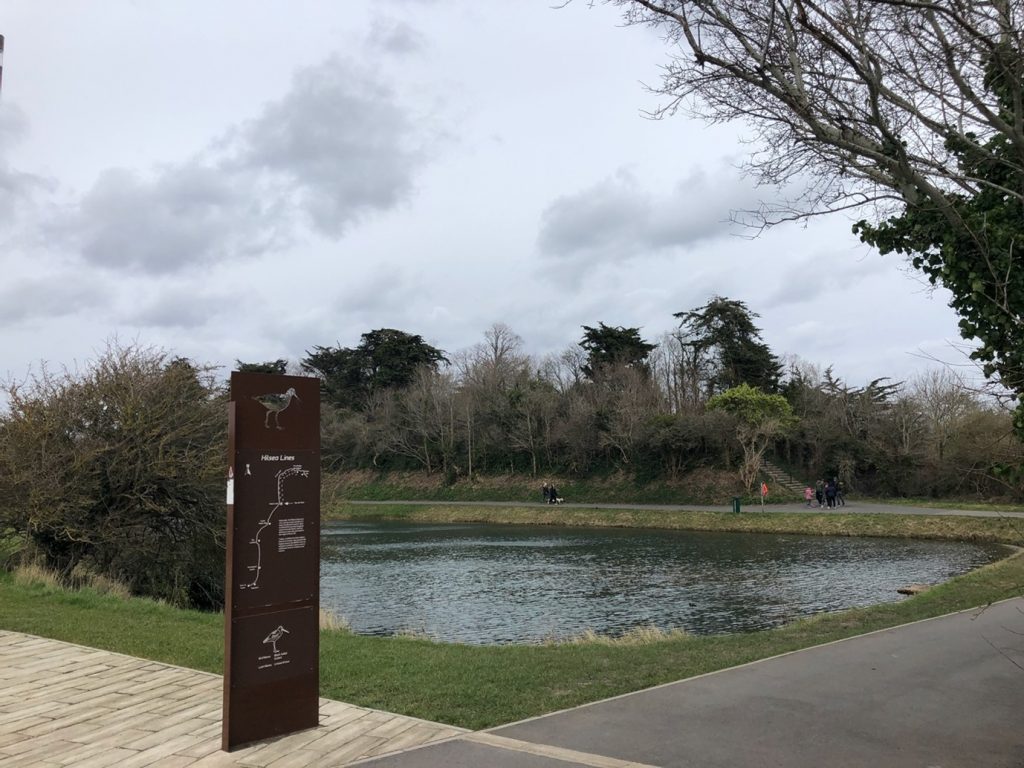
The wide pavements, and smooth surfaces are a shared space used by rollerskaters, cyclists and pedestrians, preferring this car free space to the heavily polluted Eastern Road. Seating areas have been raised, so you can glimpse views of Portchester Castle in the distance.
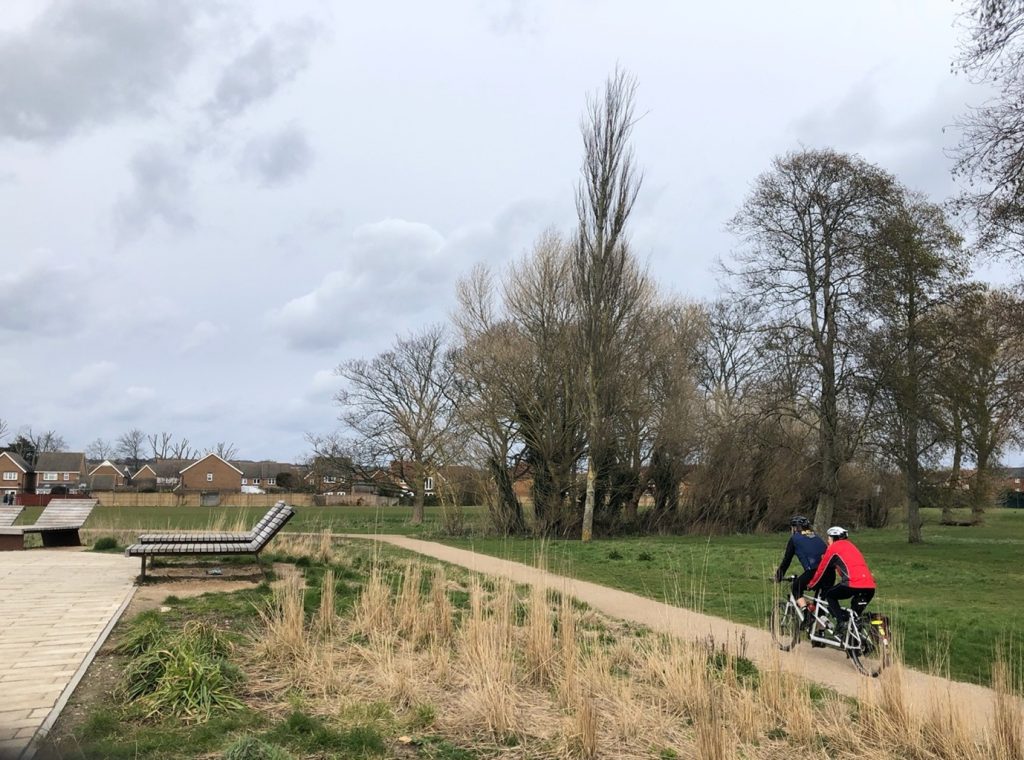
The winding routes within this linear space are enhanced with coastal planting, the beds are still establishing but the impact of the grasses against the white sea wall is already striking.
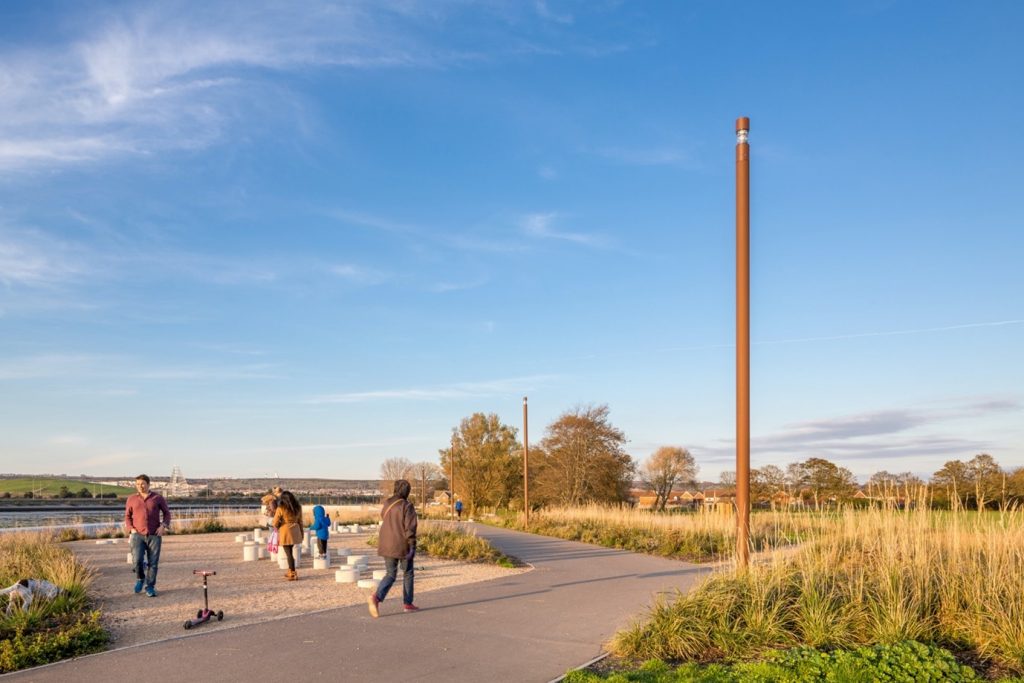
The scheme blends into the neighbouring Alexandra Park behind it, taking on a looser, naturalistic character at its edges. The gravel path is interspersed with steppingstones and pockets of planting. In some areas there is little landscape intervention other than an upgraded walkway, to celebrate and embrace the mature trees already existing on site.
The play structures dotted along this route interweave the idea of a ‘play area’ with the entire space. Children are encouraged to play and connect with nature. Information boards are educational and engaging for all ages.
For example, the ‘bird colouring station’ where children can use the metal relief work to create prints of the local bird species.
Encouraging children living in an urban environment to connect with nature and to observe the natural world around them is essential to our development in tackling the climate crisis in the future.
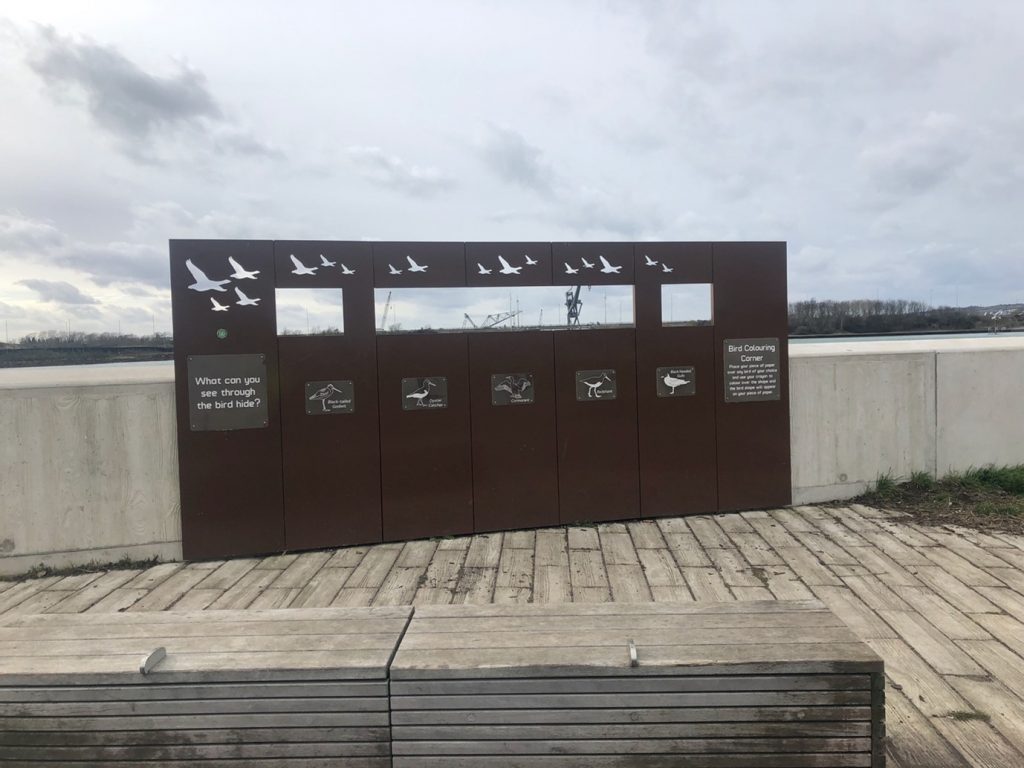
This range of spaces created by zones of planting, paving types, and a variety of furniture turns this linear site into a destination.
The seating elements are made of weathered steel to combat the aggressive conditions in this marine environment, and the litter bins have been modified to discourage seagulls from foraging inside.
The high quality of materials used shows the level of investment into Portsmouth’s green spaces and the community, creating a space to be looked after and cherished.
The identity of this site is strengthened by the addition of a mural by local artist ‘My Dog Sighs’ at the Hilsea Lido.
Throughout the pandemic we have seen that high quality green spaces are essential to a good quality of life in a city.
This scheme has been well executed using materials suitable for the environment, and sensitive planting. It has increased the high-quality public realm in Portsmouth, enhancing the urban edge for the for bird and human residents of Portsea Island for years to come.
To find out more about the coastal defences, you can find the North Portsea Island Scheme on the Coastal Partners website here; https://coastalpartners.org.uk/project/protecting-the-future-of-north-portsea-island/
